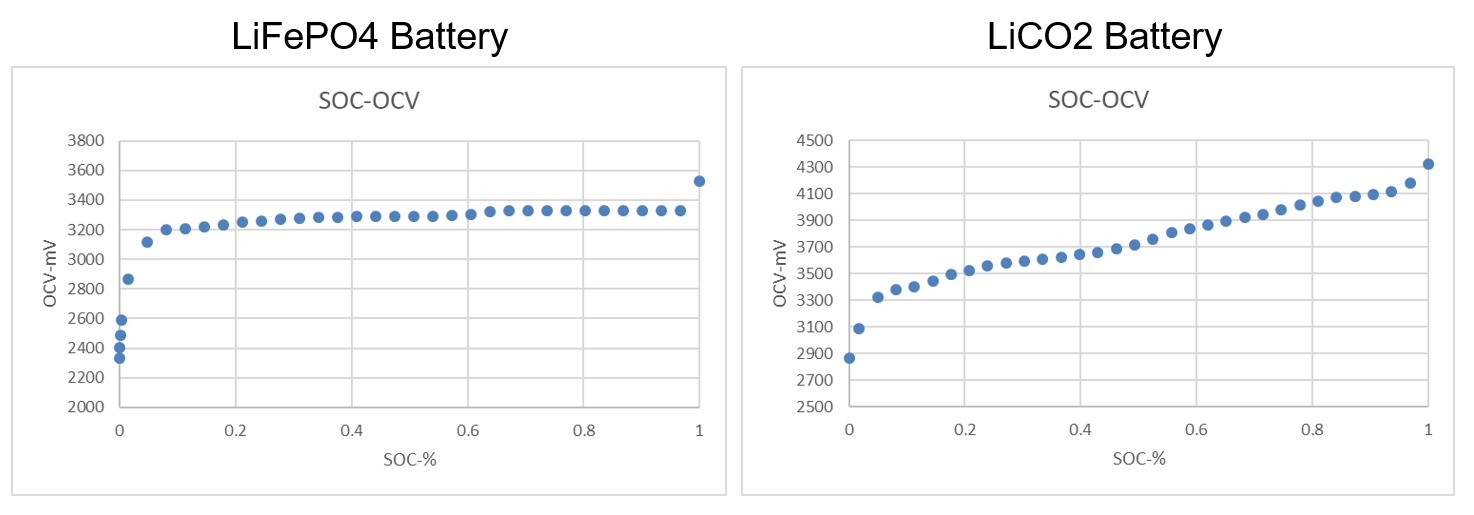SLAAEF5 March 2024 MSPM0G1505 , MSPM0G1505 , MSPM0G1506 , MSPM0G1506 , MSPM0G1507 , MSPM0G1507 , MSPM0L1303 , MSPM0L1303 , MSPM0L1304 , MSPM0L1304 , MSPM0L1304-Q1 , MSPM0L1304-Q1 , MSPM0L1305 , MSPM0L1305 , MSPM0L1305-Q1 , MSPM0L1305-Q1 , MSPM0L1306 , MSPM0L1306 , MSPM0L1306-Q1 , MSPM0L1306-Q1
- 1
- Abstract
- Trademarks
- 1Introduction
- 2Algorithm Introduction
- 3Gauge GUI Introduction
- 4MSPM0 Gauge Evaluation Steps
- 5MSPM0 Gauge Solutions
- 6References
5 MSPM0 Gauge Solutions
In this section, two different testcases are used to show the capability of MSPM0 Gauge L2:
- Able to switch from one cell detection to multi-cell detection easily
- Able to handle different battery type, especially for LiFePO4, which SOC-OCV table is much flat
 Figure 5-1 Battery SOC
Figure 5-1 Battery SOCMSPM0 hardware features are also shown, which is why it can be suitable for BMS solutions, including internal high precision analog peripherals and numerous communication methods (CAN/UART/serial peripheral interface (SPI) /inter-integrated circuit (I2C)).